Today we will look at 7-zip archiver. The developer of this program is also a Russian programmer - Igor Pavlov, as in the case with, because he was also created by a Russian team.
Zip is a common compression algorithm, but the 7-Zip archiver is actually very different from this method of compressing files, despite the fact that this word is used in the name of this program.
Archived files using the 7-Zip program have the 7z extension if you leave the default settings. But when adding files to the archive, you can change this format to zip, tar, and others. How this is done, we will consider when creating archives.
Despite its freeware, the program provides not a bad compression ratio, no worse than the paid WinRAR program. You can download the latest version from the official website.

After installing the program, we need to run it. As I understand it, it does not create a shortcut on the desktop, so to start it you will have to find it in "Start".

The main window of the program is very simple. At the top are various menus, below are large buttons that perform the main work, below them is the address bar, where we can navigate through folders and disks, and even lower we see the files and folders that lie at the address selected above.

But in fact, this window is rarely used when creating archives. Almost always used explorer context menu. Let's consider this process in more detail.
We decide on the information that we will pack into the archive. Right-click on a file or folder with files. In the context menu that opens, find the items " 7-Zip - Add to Archive».

In the window that opens, you need to make settings, consider what is there. Well, the very first thing is the name of the archive, set it or leave it by default, if it suits us. In the drop-down list of the Archive format parameter, you need to select the format in which the files will be packed - this is 7z, ZIP, TAR, or another of the proposed ones. The most commonly used are ZIP and 7z. Parameter Compression level, I think, is clear, the higher it is, the less the archive will weigh at the output, but the slower the packing will be. Almost at the very bottom, you can specify the size of each file if we want to split it into volumes. On the right, in the Options parameter, there is an item " Create SFX archive". You need to check the box here if you want a self-extracting archive to be created that does not require installed archivers on the computer for unzipping. I want to note that when choosing, for example, the ZIP archive format, this function will not be available. Just below there is an Encryption option that will help protect your archive by creating a password for it. In this case, unpacking the archive will be possible only if the correct password is entered. When everything is set up, click "OK" to start creating the archive.
In the picture below, I marked everything that we considered:

When creating archives in 7z format, I recommend creating SFX archives, because 7-zip program many are not installed and may experience problems when unpacking. A self-extracting archive does not need any programs. So keep that in mind.
Windows 7 allows you to use default programs to open certain types of files, such as: archive files, music, images, video files, web pages, and others.
Suppose a user has two image viewers installed on the user's computer. By double-clicking on an image file, it will open for viewing the one that is used by default.
To open the same image in another program, you need to right-click on it to bring up the Explorer context menu, click on “Open with ...” and select the one you need. But that's not all, because there can be several formats for a certain type of file, for example, for image files: bmp, jpg, gif, etc.
And the user, for example, needs to open in BMP format in the Paint graphics editor, and open in JPG format in FSViever. Also, for example, a RAR archive file can be opened in WinRAR, and a ZIP file in Explorer.
Today you will learn how you can set a default program to open files, as well as how to choose defaults (certain file formats) for this program.
DEFAULT
Go to "Control Panel" - "Default Programs".
Click on "Set default programs".

To use a program from the provided list to open all types of files that it can open, you must select it and click on “Set this program as default”. For example, the WinRAR archiver, when you click on "Use by default", will open not 20 types of files out of 22, as at the moment, judging by the information provided, but all possible ones.


CHOOSE DEFAULT
Select the program and click on "Choose defaults for this program".

We mark the file formats that will be opened in this program. For example, we will use the Paint graphics editor to open files in the format by checking the corresponding file format, and we will open the JPEG file using the Windows Photo Viewer.
– Igor (Administrator)Zip archiver
Almost every computer user, one way or another, met with such archive files as ZIP or RAR (the most popular formats). And despite the fact that Windows contains a built-in component for managing Zip archives, many users still prefer to install various third-party archivers, as they support a larger number of different formats and provide a more powerful and convenient set of tools for managing and creating archives.
Note: You can find some good archivers in the article Best Free Utilities for Creating File Archives .
One of the most famous free archiver programs is 7-Zip. It supports many different formats, is built into the Explorer context menu, and has a fairly good set of default settings. That is why the utility can be classified as "installed and used". But, nevertheless, do not forget that the program allows you to customize many functions to suit your needs.
Note: Of course, this utility can only read and unpack the fairly popular RAR format. But, in most cases, one reading will be enough. As a last resort, you can always download and install WinRar to create RAR archives.
Setting associations with 7-Zip files
Windows supports configuring file associations with programs. This allows you to quickly open files without having to open the programs themselves first. All that is needed from you, after setting up the associations, is to open Windows Explorer and double-click on the required file.
The 7-Zip archiver allows you to specify for which file formats you need to configure such associations. And here's how it's done:
- Open the list of all programs in the start menu and select "7-Zip File Manager"
- In Windows Vista / 7, you need to open this manager with administrator rights. To do this, right click on "7-Zip File Manager" and select "Run as administrator"
- When the manager opens, open the "Tools" menu and select "Settings". A dialog box will open as shown in the figure above.
- On the "System" tab, check the boxes next to the file formats you want to associate 7-Zip with
Customizing 7-Zip File Explorer Context Menu Items

7-Zip allows you to customize the available Windows Explorer context menu items (By the way, users with 64-bit operating systems need to install the 64-bit version of 7-Zip in order for the program to integrate into the Windows shell). Some of the items refer to operations on the archives themselves, and the other part is for creating archives for selected files. They are quite easy to set up, and here's how to do it:
- Continue from step 3 or step 5 of the previous instructions, and select the "7-Zip" tab (Remember that in Windows Vista/7 the manager must be run as administrator)
- You should see the same window as shown in the picture above.
- The first two settings are related to display. "Integrate 7-Zip into Shell Context Menu" - Allows you to include or exclude all 7-Zip menus from the File Explorer context menu. Setting "Cascading context menu" - allows you to either group items in "7-Zip" (when enabled), or display the entire list of available actions as separate items (when disabled)
- The "Context Menu Items" area just contains all the available items. Check the boxes according to your preferences
- Click the "Apply" button if you want to change settings on other tabs. Or click the "OK" button and close the manager.
Now you know how to customize 7-Zip to suit your needs.
To the idea of introducing an archiver into the Windows environment that could support many types of archives, Microsoft has not yet matured. Even the current version of System 10, which initially introduced a lot of new features at the time of release and as a result of cumulative updates, has not evolved in any way regarding the functionality for archiving and unzipping data. Its regular archiver, implemented back in Windows 98 and migrated to successor versions, provides for working only with archives ZIP
.
How to ensure work with archives of other formats in Windows? Below we will talk about several third-party archiving programs, but first a few words about the few features of the operating system itself.
1. ZIP archiver included with Windows
If, for example, you urgently need to upload a package of files to a cloud service or send a package of files by mail, Windows itself will cope with the task. The sent files must be collected in a folder or all of them should be selected in a block, call the context menu, select , then - "Compressed ZIP Folder".
Because unboxing ZIP supported by the operating system itself, the recipient does not need to resort to using third-party archiving programs, he will be able to freely access the data. Archives in the system explorer are viewed as regular folders, and they are unpacked when you run the archive files.

Unzipping ZIP indicating a specific path for extracting data is also possible from the explorer context menu.

Format supported by standard Windows functionality ZIP is not the most common. Most often, files downloaded from the Internet are packed in the format RAR . Also on the network you can find files compressed in 7z, tar, GZ and other types of archives. To unpack them, you must have a third-party archiver in the system that supports the appropriate format.
2. WinRAR
The most popular archiver in the world - WinRAR. Using it for years, many users do not even suspect that this is a paid program. All thanks to the unlimited loyalty of the developers. Being integrated into Windows, the program works from the explorer context menu like a regular free product. Only at startup WinRAR or viewing archive data after 40 days after the installation of the program, an unobtrusive notification appears asking you to pay for the license.
WinRAR - a program with a usable interface, extensive functionality, an optimal ratio of the degree of data compression and the speed of operations. It supports many formats, in particular, RAR, ZIP, 7-Zip, CAB. It can pack self-extracting archives, split archived content into parts, set password access.
To pack files with WinRAR in the system explorer, you need to call the context menu on these files and select either or "Add archive - folder_name.rar".

The last option will create RAR -file with default archiving settings. If you need to select a different type of archive, apply your own compression settings, or use other program functions, select the first option and set the necessary settings.

You can unzip data directly in the archiver window, as well as from the explorer context menu.

3. 7-Zip
7-Zip is a completely free archiver for Windows. Functional, integrated into the system environment, with the ability to unzip a huge number of formats, but support for archiving only a part of them. The program works with the format of its own production 7z high compression ratio, with third-party ZIP, WIM, XZ, tar etc. Above considered WinRAR program 7-Zip only loses by the impossibility of creating RAR -archives and outwardly unattractive interface. Among its advantages is the management of archive files in an interface with a two-pane layout (similar to file manager) .
Functions 7-Zip for packing and unpacking archives are available in the context menu of Windows Explorer.

The program can quickly pack data into a format 7z with default archiving options. And when choosing a menu item, we get the opportunity to use individual features of the archiver.

Those who work with data through the most famous file manager do not need to install additional programs. It includes its own archiver with support for many types of archives, in particular, RAR and ZIP . If necessary, you can implement support for more formats by implementing a plugin. Working with the archiver is carried out using a two-pane layout of the program interface: in one part of the window, the source data for archiving or unarchiving is selected, in the other part, the path to the archive or the place to unpack the files is indicated. The archiver commands are located on the program toolbar and in the menu "Files".

Of the possibilities – division of archived content into parts, creation of self-extracting archives EXE -format, password access.


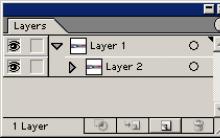
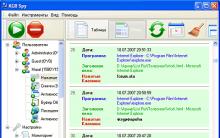
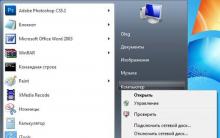
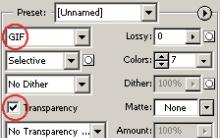

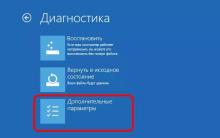




Net framework not lower than 3.5. Installing or updating, fixing bugs. Installation via Windows Update
Which antivirus to choose for windows phone?
Rollback Android: how to return the old version of the firmware?
Windows won't boot after installing updates
Windows won't boot after installing updates